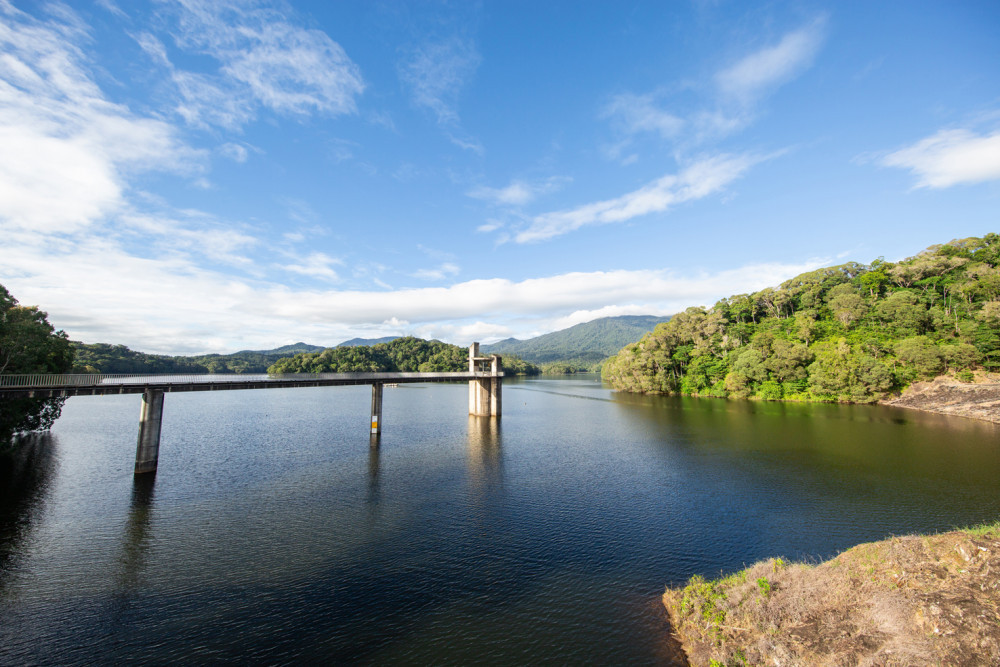General News
30 July, 2021
Saving water in households not a major council priority
CAIRNS’ population is growing to an extent that the region’s main council is warning us we will run out of water unless major new water infrastructure is built quickly.

Yet, Cairns Regional Council has again made it clear that while it is investing in the short-term future of water security with infrastructure, it is only mildly interested in changing consumers’ habits to save water.
“Water conservation doesn’t cut it up here,” a Council spokesman said. And, from the Mayor, Cr Bob Manning: “While continued water management is important, the community has already done its part by reducing water consumption by 42% per capita over the past 15 years.”
“Water conservation doesn’t cut it up here,”
But the per capita usage of water is still very high compared to other areas in Queensland, at just under 400 litres per day per person in the Cairns council area. Comparatively in south-east Queensland, which takes in several local government areas including Brisbane and the Gold Coast, the average is around just 160-180 litres per day. Both regions use the same way of calculating average usage: dividing the total water used; residential, commercial and civil, by the area’s population.
Cairns Council will spend at least $215 million on a new project involving the sourcing of fresh water from the Mulgrave River. It will include intake infrastructure, supply and mains connection pipelines, and a treatment plant and reservoirs. Work is due to start in 2024, and by two years later, Council believes the project will secure the region’s water supply for its growing population well into the future.
So, if the community has already reduced water consumption by 42% per capita, is Council happy with the effort, or can more be done to adjust people’s habits and save water?
“Of course, we will continue to work with the community in managing water use but asking them to make radical changes to conserve even more water is not sustainable,” the mayor said.
“We could ask people to take one-minute showers, to not pressure clean their driveways and to not water their gardens, which are the sort of measures Council imposes as part of more severe water restrictions, but this undermines the very reason why people choose to live and visit this part of the world.”
But in the SEQ Water area, consumers changed their relatively high water usage lifestyles after the Millennium Drought, which lasted from 2001-2009. They reduced water per capita usage by almost half (it was more than 300 litres per capita before the drought), meaning that a whole generation of children are growing up with a different attitude towards water conservation.
Will such major changes towards water conservation ever happen in Cairns? Not likely, under current water policy. Even the use of rainwater tanks is barely acknowledged, let alone incentivised with rebates or similar. Mark Wuth, Council’s General Manager for Water and Recovery said:
“Residential tanks for collecting rainwater are not considered effective for Cairns.
“Most of rain falls within a few months, therefore a typical 5000-litre tank connected to a 300 square metre roof would meet little to none of the demands during Cairns’ extended dry season. This means they would contribute very little to reducing mains water use.
“However, rainwater tanks remain an option for homeowners that could be used to substitute mains water in laundries, for toilet flushing, in the garden and other external uses.”
Variable pricing of water – believed to have been successful in reducing Melbourne, Victoria’s per capita rate down to 160 litres per day – is also out of the question in Cairns in the foreseeable future. “Variable pricing has been considered by Council,” Mr Wuth said. “However, the view is that it has potential to penalise naturally higher users, such as large families, rather than to incentivise water wise behaviours.”
If there’s to be a major shift in attitude towards saving water at a household level in the Cairns region, it is clear any such changes will have to start with consumers, and not the water authorities.
In the meantime, council’s focus is on infrastructure, especially the new Mulgrave River works. “Without this new water source, residents can also expect more severe water restrictions more often,” Cr Manning said.
“Importantly, this project delivers a supply like a dam, but it is significantly cheaper and has a lighter
environmental footprint.”


